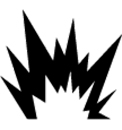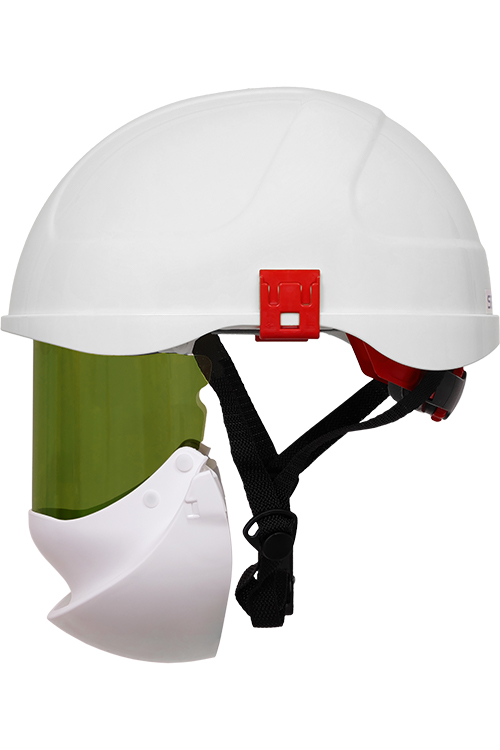
STANDARDS FOR HELMETS
» EN 397 » EN 50365 » EN 166 » ASTM F2178
Helmets are certified and tested according to different standards to provide the user with information in order that the correct helmet with the right protection for the specific working area can be chosen.
Tranemo recommends:
- Use the helmet in conjunction with your protective clothing and make sure it is firmly positioned on the head.
- When not in use, store ithe helmet at the correct temperature (5°C - 35°C).
- Do not use the helmet when working if the helmet or other component (shell, visor, adjusters or chin straps) is damaged or dirty.
- A wet or damp helmet should be dried thoroughly before use.
- The helmet has a limited lifespan and must be thrown away before the expiration date has passed. Lifespan information can be found on the back of the helmet.
EN 397
Standard for industry helmets
The standard specifies requirements for materials and performance, test methods and labeling requirements for industrial safety helmets.
The mandatory requirements apply to helmets for general use in industry. There are some optional additional performance requirements that the helmet manufacturer can choose to specify. Industrial safety helmets are primarily intended to provide the wearer with protection against falling objects, where consequential damage to the head or skull fracture is a risk. Helmets certified according to EN 397 must meet the requirements for falling objects, penetration of sharp objects, flame and triggering chin straps.
EN 50365
Standard for electrically insulated helmets for use in low voltage installations
This optional test ensures reliable protection against electric shock up to AC 1000V or DC 1500V. The voltage used for this test is 10,000V. Helmets approved according to EN 50365 must be marked with the triangle symbol and ”Electrician class 0” inside the shell.
Helmet approved according to EN 50365:
- Protects against electric shock and dangerous electric current through the head.
- Protects against alternating voltage up to 1000 V (AC) or voltage up to 1500 V (DC)
- May not contain any conductive parts if the helmet is insulating.
- Do not have air vents that can cause accidental contact with live parts.
- Must meet the requirements in accordance with EN 397.
EN 166
Standard for eye protection
The standard specifies functional requirements for all types of eye protection. The standard deals with general considerations concerning eye protection, such as designation, classification, basic requirements, special requirements and additional requirements, test methods, labeling and information to the user.
- Eye protection should be free from protruding parts, sharp edges or other defects, which are likely to cause discomfort or damage during use.
- No parts of the eye protection that come into contact with the wearer should be made of materials that are known to cause skin irritation.
- Headbands must be at least 10 mm wide over all parts that may come into contact with the wearer’s head.
- Headbands must be adjustable or self-adjusting.
- Glasses approved according to EN 166 must be tested according to:
- EN 167 Optical test - This includes tests for field of view, transmission and diffusion as well as refractive properties.
- EN 168 Robustness and resistance to heat, ignition and corrosion. There are two robustness tests - ”minimal robustness” and ”increased robustness”.
- EN 170 - Requirements for filters against UV radiation.

Arc Rating value for visor
ASTM F2178 (Open Arc) - Test method to determine the visor’s Arc Rating (ATPV or EBT).
GS-ET-29E (Box Test) - Test method and certification of face protection.
This arc test results in a pass or fail result according to the following settings:
APC 1 - 168kJ (4kA, 400V)
APC 2 - 320kJ (7kA, 400V)
The test methods correspond to EN 61482-1-2 Box test, but are modified to suit face protection.

